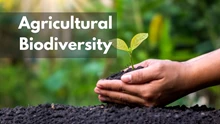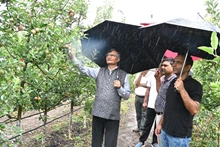
The drop in Indian cane production due to the global climate phenomenon, EL-Nino, had led to a sudden stoppage of ethanol production from syrup and BHM from mid-December 2023. This meant that only 20 Lac tons of sugar was diverted towards the production of around 200 Cr ltrs of ethanol. However, based on the sugar production figures, India could have afforded to produce around 250 Cr ltrs of ethanol more by diverting a further quantity of around 25 Lac tons sugar even after meeting the full requirements of 285 Lac tons of sugar for domestic demand after leaving more than adequate 66 Lac tons of closing stock at the end of the season.
Subsequently, the sugar industry could have supplied 450 Cr ltrs of ethanol which could have been almost adequate for the current ethanol year requirement from the sugar industry. Looking at the statistical figures above, we delve into the challenges faced by the sugar sector in meeting the 20% ethanol blending target in future and explore the policy interventions necessary to facilitate compliance. By examining the economic and environmental benefits of ethanol blending, the Indian Sugar & Bio-Energy Manufacturers Association (ISMA) aims to provide a comprehensive overview of the road ahead in achieving this critical milestone for the Nation.
India’s 20% Ethanol Blending Requirement
India started blending ethanol in petrol on a pilot basis in 2001 before launching the dedicated Ethanol Blended Petrol (EBP) programme in 2003. Since then, India has come a long way to set a 20% ethanol blending target till 2030. This measure is designed to lower carbon emissions, enhance air quality, and promote the use of biofuels derived from renewable sources such as sugarcane, corn, or other biomass. It also aims to create a more sustainable energy mix and reduce the reliance on fossil fuels.
Prabhakar Rao, President of the Indian Sugar and Bio-Energy Manufacturers Association (ISMA), said, "The Indian sugar industry is well-positioned to meet the government's ambitious 20% ethanol blending target by 2030. Our industry can contribute a significant 55% of the ethanol requirement, and even increase that to up to 60% if we can get stable policy support and investment on sugarcane production stabilisation."
Striving to achieve the same, ISMA is confident that the sugar industry is capable of meeting the 55% ethanol supply to meet the 20% EBP target by 2030. In addition, the industrial landscape holds the ability to stabilise the policies and investment in sugar production.
Implications for the Sugar Industry
For the Indian sugar industry, the Ethanol Blending Requirement presents both challenges and opportunities. On one hand, it offers a new market for ethanol production, creating a potential revenue stream. On the other hand, meeting the demand for ethanol production necessitates significant investments in infrastructure and technology, posing challenges for sugar producers.
Current Challenges
Availability of Raw Materials - One of the primary challenges is ensuring an adequate and affordable supply of raw materials for ethanol production. The sugarcane area needs to be expanded only marginally by about 7-8%. And, the yield is required to be stabilised at about 81-82 tons per ha. The country achieved the highest sugarcane production of 4616 Lac tons in the year 2021-22 with a productivity of 82.7 tons per ha. We need to increase to 5100 Lac tons and stabilize the production to meet the country’s sugar and ethanol demand.
Additionally, the experts believe that if the cane production stabilisation measures are undertaken in collaboration with cane farmers by extending various schemes of the Govt. of India, the sugar industry can increase its contribution to even up to 60% of ethanol supplies after fully meeting the sugar demand of the country.
Policy Interventions Needed for Ethanol Blending
To enable the sugar industry to meet the Ethanol Blending Requirement after meeting the sugar demand fully, the following policy intervention is crucial:
Harmonious fixation of MSP for sugar and ethanol prices for the three feedstocks syrup, B Heavy and C Heavy molasses while announcing FRP for sugarcane– The sugarcane farmers and the sugar industry needs to harmoniously co-exist. While the FRP is announced by the Government every year, the MSP for sugar remains unchanged for more than 5 years. It is of paramount importance to fix the MSP and ethanol prices along with the FRP every year establishing harmony and financial viability. The ethanol production and the sugar production will reach an equilibrium based on the market-driven economics. The revenue share ratio (of sugar) for Indian cane farmers is 75% which is far higher, as opposed to 70% in other important cane-growing countries like Thailand and Brazil.
Therefore, the 75% ratio proposed is very reasonable. As such, despite the sugar prices being the lowest in India, the farmers are paid the highest Fair and Remunerative Price (FRP) as compared to other cane-growing countries. Based on the FRP of Rs. 340/- per Qtl for the sugar season 2024-25, it is estimated that the industry had to pay Rs. 1,20,000 Crs to the cane farmers. That’s why the sugar industry needs to be in a good financial position to continue shouldering this responsibility in the future without any financial burden on the Government. With stable policy support, the sugar industry can attract more investments, leading to further capacity creation that can help meet the domestic sugar requirement and produce ethanol as per the EBP program.
With the sugarcane production stabilization measures to be undertaken as proposed by ISMA and the stable policy on pricing of cane, sugar and ethanol, in the future there shall not be any shortage of either sugar or ethanol with a viable industry and higher incomes to the farmer.
From regulatory tweaks to stakeholder collaboration, and international inspiration - ISMA has laid out the framework for a successful sugar industry transformation. The stoppage of ethanol production from December 2023 has resulted in excess closing stock of about 9.1 million tons over and above the 5.5 million requirements. This led to a drop in sugar prices and losses to the industry besides delays in payments to the cane farmers. Thus, the execution of policy interventions to empower the sugar industry to meet the 20% ethanol blending prerequisite is not merely a calculated effort in the direction of sustainable energy practices but also a vital move in contributing to the financial strength of the sector and the welfare of farmers.
By tackling the challenges and being in favour of supportive regulatory frameworks, we can pave the road for a well-organised and ecologically aware sugar industry. The stakeholders need to collaborate, innovate, and take positive action to ensure a smooth transition towards a future powered by renewable resources. Let us work towards a greener, more sustainable tomorrow!












